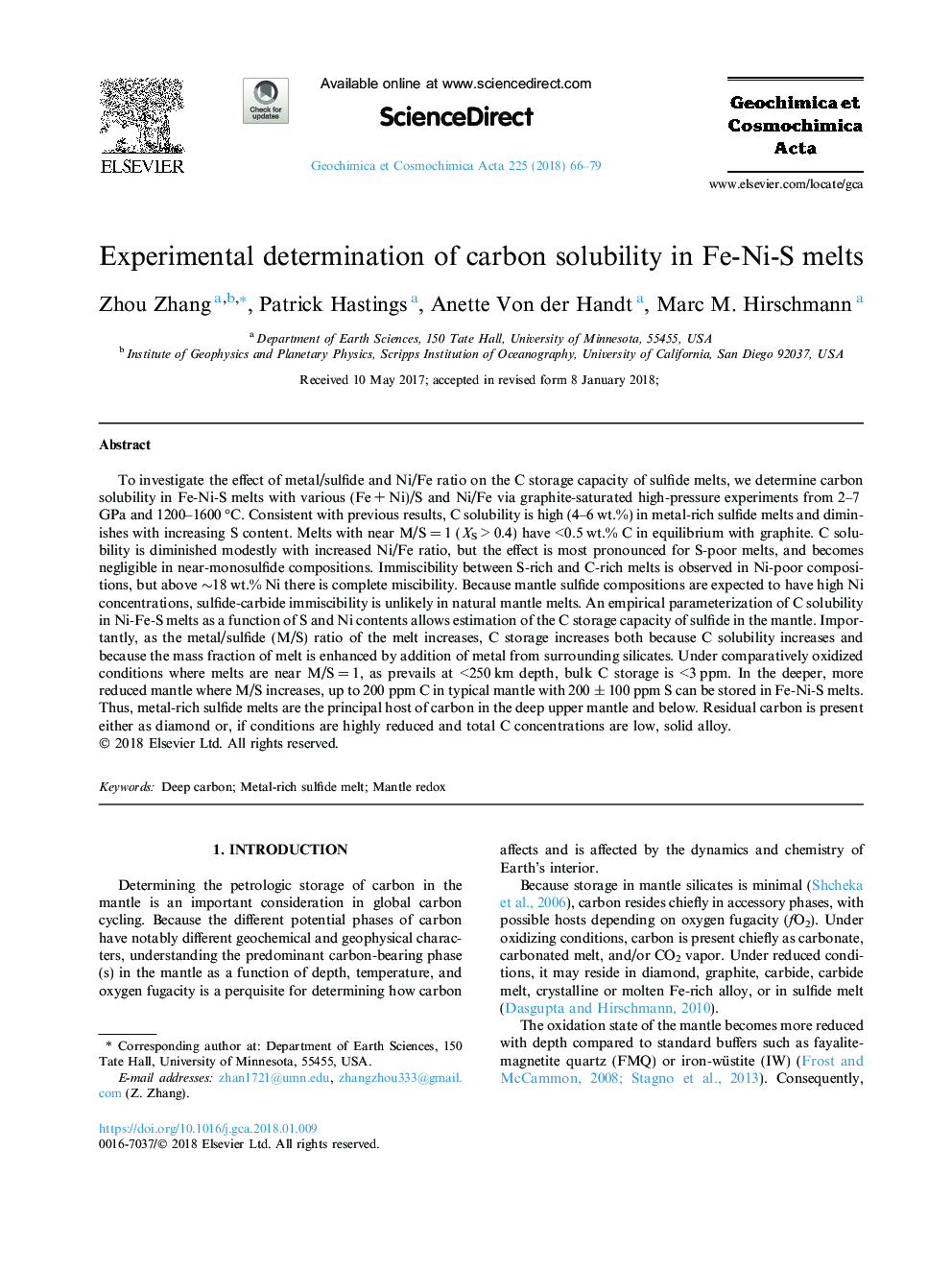| کد مقاله | کد نشریه | سال انتشار | مقاله انگلیسی | نسخه تمام متن |
|---|---|---|---|---|
| 8910842 | 1637932 | 2018 | 14 صفحه PDF | دانلود رایگان |
عنوان انگلیسی مقاله ISI
Experimental determination of carbon solubility in Fe-Ni-S melts
دانلود مقاله + سفارش ترجمه
دانلود مقاله ISI انگلیسی
رایگان برای ایرانیان
موضوعات مرتبط
مهندسی و علوم پایه
علوم زمین و سیارات
ژئوشیمی و پترولوژی
پیش نمایش صفحه اول مقاله

چکیده انگلیسی
To investigate the effect of metal/sulfide and Ni/Fe ratio on the C storage capacity of sulfide melts, we determine carbon solubility in Fe-Ni-S melts with various (Feâ¯+â¯Ni)/S and Ni/Fe via graphite-saturated high-pressure experiments from 2-7â¯GPa and 1200-1600â¯Â°C. Consistent with previous results, C solubility is high (4-6 wt.%) in metal-rich sulfide melts and diminishes with increasing S content. Melts with near M/Sâ¯=â¯1 (XSâ¯>â¯0.4) have <0.5â¯wt.% C in equilibrium with graphite. C solubility is diminished modestly with increased Ni/Fe ratio, but the effect is most pronounced for S-poor melts, and becomes negligible in near-monosulfide compositions. Immiscibility between S-rich and C-rich melts is observed in Ni-poor compositions, but above â¼18â¯wt.% Ni there is complete miscibility. Because mantle sulfide compositions are expected to have high Ni concentrations, sulfide-carbide immiscibility is unlikely in natural mantle melts. An empirical parameterization of C solubility in Ni-Fe-S melts as a function of S and Ni contents allows estimation of the C storage capacity of sulfide in the mantle. Importantly, as the metal/sulfide (M/S) ratio of the melt increases, C storage increases both because C solubility increases and because the mass fraction of melt is enhanced by addition of metal from surrounding silicates. Under comparatively oxidized conditions where melts are near M/Sâ¯=â¯1, as prevails at <250â¯km depth, bulk C storage is <3â¯ppm. In the deeper, more reduced mantle where M/S increases, up to 200â¯ppm C in typical mantle with 200â¯Â±â¯100â¯ppm S can be stored in Fe-Ni-S melts. Thus, metal-rich sulfide melts are the principal host of carbon in the deep upper mantle and below. Residual carbon is present either as diamond or, if conditions are highly reduced and total C concentrations are low, solid alloy.
ناشر
Database: Elsevier - ScienceDirect (ساینس دایرکت)
Journal: Geochimica et Cosmochimica Acta - Volume 225, 15 March 2018, Pages 66-79
Journal: Geochimica et Cosmochimica Acta - Volume 225, 15 March 2018, Pages 66-79
نویسندگان
Zhou Zhang, Patrick Hastings, Anette Von der Handt, Marc M. Hirschmann,